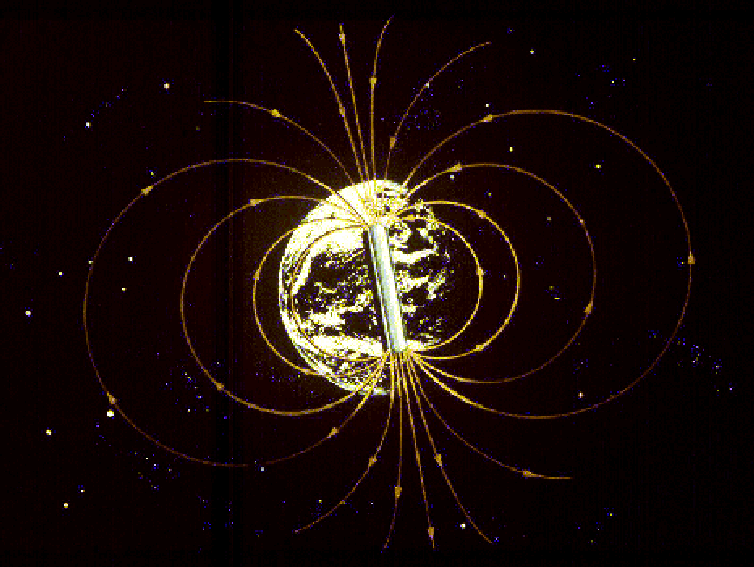
 Copyright © Michael Richmond.
This work is licensed under a Creative Commons License.
Copyright © Michael Richmond.
This work is licensed under a Creative Commons License.
What are aurorae, and why do they occur? The short answer is that we see shimmering lights in the sky because charged particles from the Sun are smashing into the upper reaches the Earth's atmosphere and exciting air molecules, causing them to glow. But the real answer is much more detailed.
The charged particles fly through space. A very small fraction of them head straight for the Earth, where they encounter the Earth's magnetic field.
You can learn more about the Earth's magnetic field and its connection to the sun at the International Solar-Terrestrial Physics web page.
SpaceWeather.com has information about the current conditions in space around the Earth.
Basically, the Earth acts like a big dipole magnet.

Our magnetic field is squashed on one side due to the pressure of the solar wind:
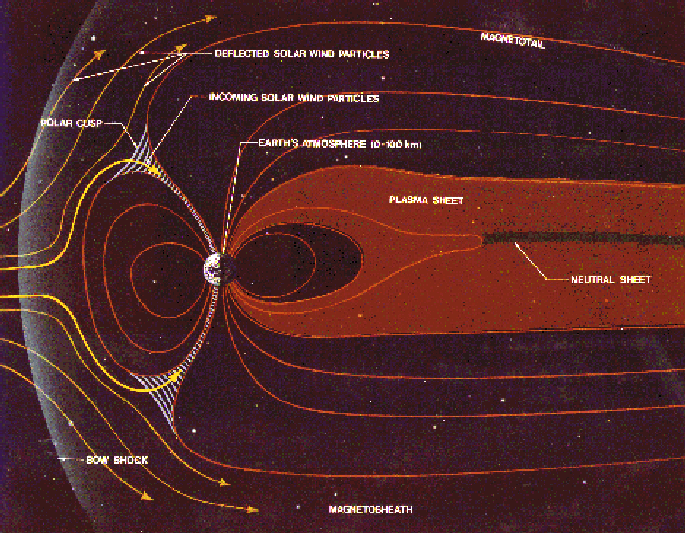
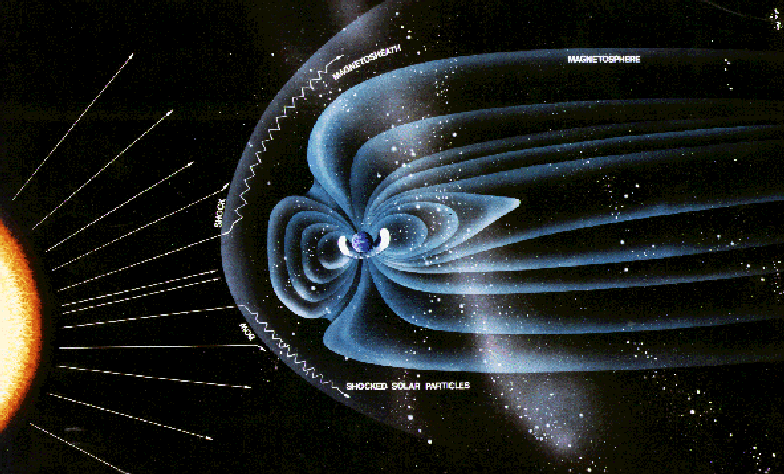
Aurorae appear as colorful ribbons or curtains of light in the sky -- as seen by observers on the ground. You can look at examples of aurorae on Oct 21-22.
But one can also detect aurorae from ABOVE the Earth's atmosphere, as these satellite pictures show.
Image from POLAR satellite, July 13, 2000.
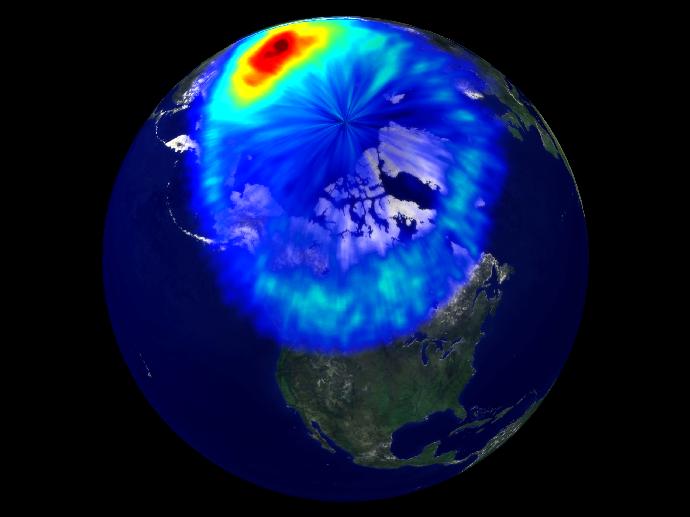
A picture of the Aurora Australis, taken from the Space Shuttle, May 6, 1991.
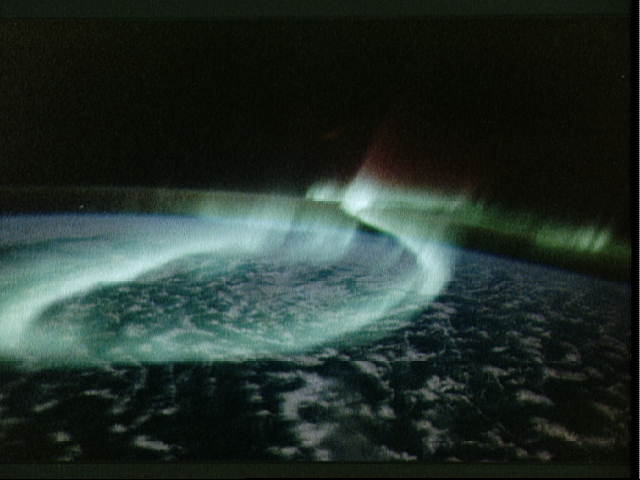
Images of both poles, taken by the Dynamics Explorer-1 satellite's Spin-Scan Auroral Imaging experiment.
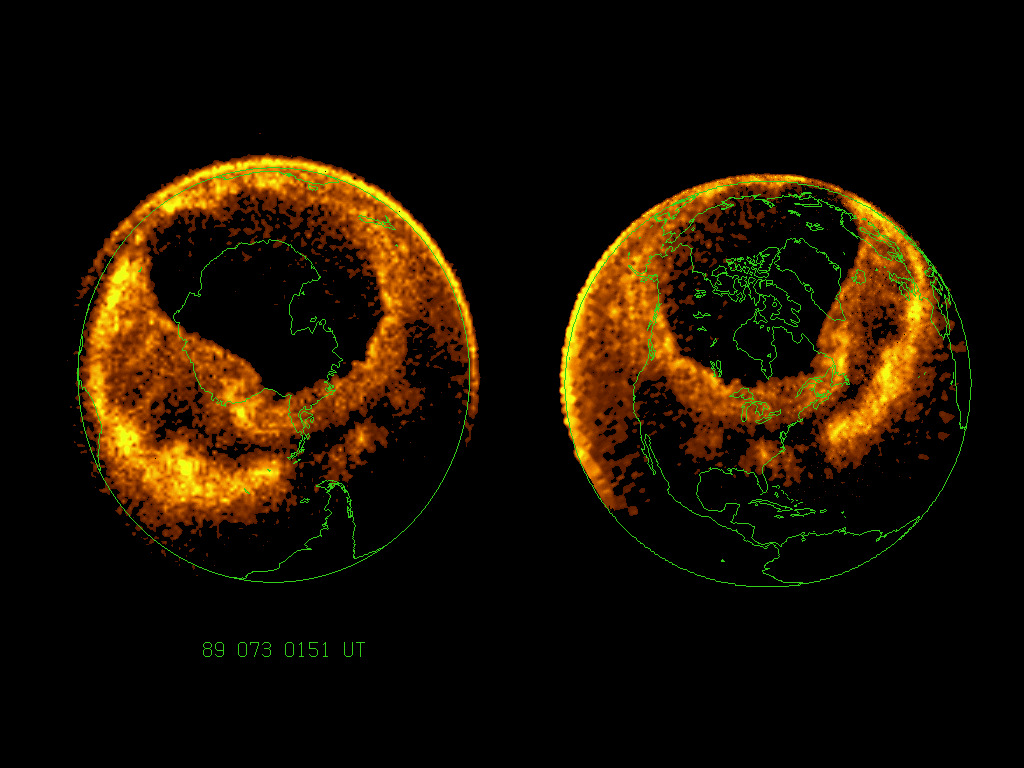
Earth isn't the only planet which has auorae. Jupiter's magnetic field is MUCH stronger than Earth's, and it, too, experiences aurorae around its magnetic poles.
A composite of a picture of Jupiter in ordinary light, plus inserts in ultraviolet light showing auroral emission from the poles.
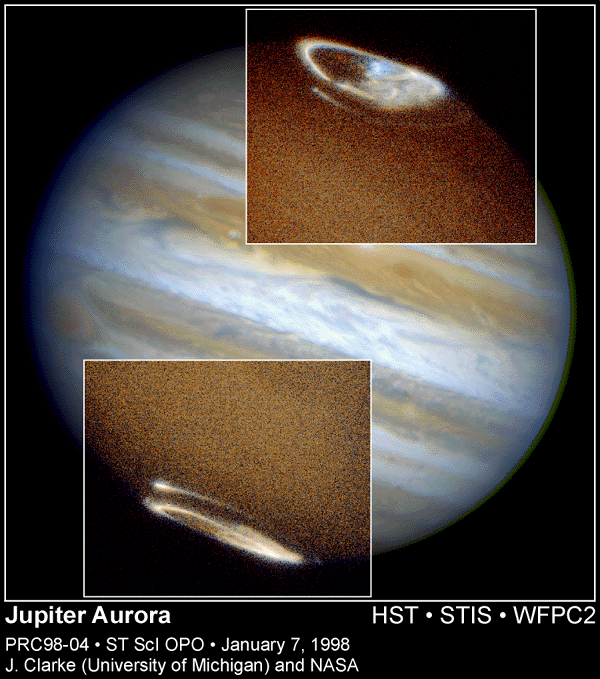
This closeup was taken by the Hubble Space Telescope's STIS instrument, on Nov 26, 1998.
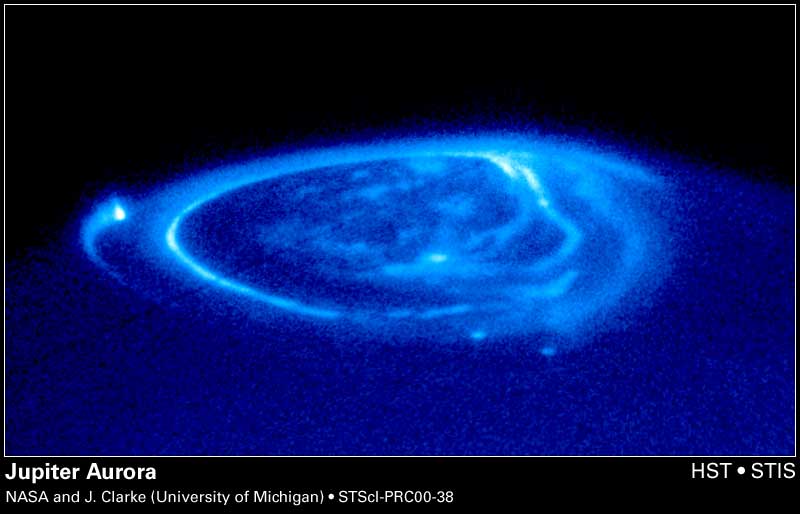
 Copyright © Michael Richmond.
This work is licensed under a Creative Commons License.
Copyright © Michael Richmond.
This work is licensed under a Creative Commons License.